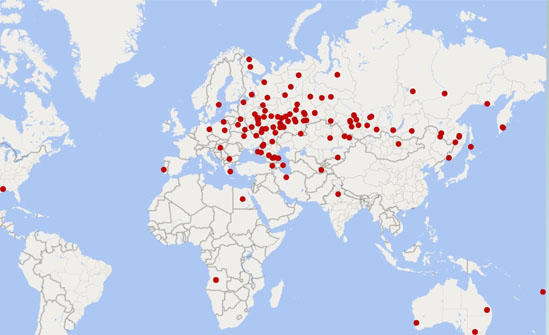ANSDIMAT includes several modules that allow solving everyday hydrogeologist problems effectively
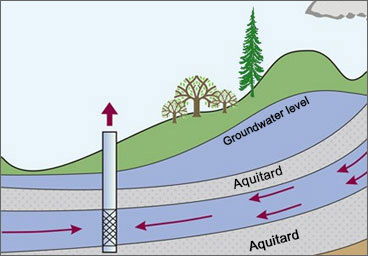
Aquifer Test Analysis
Module AnsTest: aquifer tests analysis by manual and automatic curve-matching methods. Pumping tests, recovery tests, slug test, stream-aquifer interaction test.
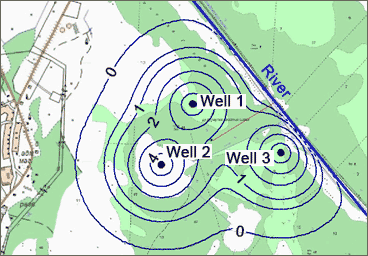
Wellfield design & impact
Module AmWells: analytical modelling of groundwater wells and well systems, well drawdown prediction. Maps of piezometric heads and cross-sections.

Mine Inflows and Dewatering
Module AnsPit: prediction of groundwater inflow to an open pit, planning and optimisation of pit dewatering borefield.
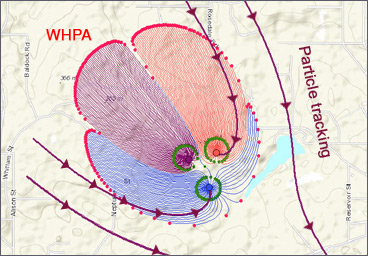
Capture Zones Delineation (WHPA)
Module AnsTrack: particle tracking to determine groundwater flow paths and to delineate the capture zone of a pumping well.

Numerical Modelling of Radial Flow
Module AnsRadial: finite-difference 2-D axi-simmetric groundwater flow models to simulate aquifer tests in complex hydrogeological conditions.
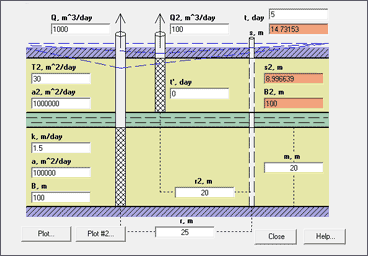
Hydrogeologist workbench
Module AnsQuick: Suite of calculation tools for quick estimates that can be used for aquifer test planning or mine dewatering. Hydrogeology units and parameter converter. Special function calculator.
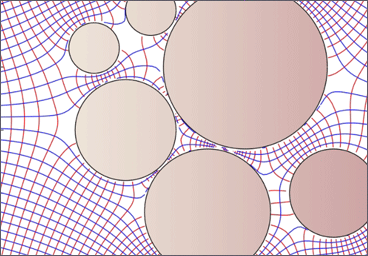
Analytic element flow models
Module AnsAem: used to simulate steady state groundwater flow problems for a single layer for a variety of hydrodynamic boundary conditions.

Solute transport in groundwater
Module A-Conc: prediction of 1D and 2D contaminant migration by analytical methods.

Aquifer test design and planning
Module ANS-IT is a tool for aquifer test design and planning.
What Is ANSDIMAT
ANSDIMAT it is a suite of software tools that uses analytical solutions to solve groundwater flow and transport problems. These solutions provide assistance to hydrogeologists who are dealing with water supply, mine dewatering, civil construction or environmental assessments. Typical examples of ANSDIMAT applications include:
• Interpretation of aquifer pumping tests, packer tests, slug tests;
• Design and optimisation of wellfields for water supply or mine dewatering;
• Prediction of groundwater inflows to open pits and underground mines;
• Prediction of drawdown from vertical or horizontal wells;
• Delineation of Well Head Protection Areas;
• Prediction of contaminant migration using particle tracking or dispersive transport modelling;
• Modelling of sea water intrusion in aquifers.
ANSDIMAT comprises the following eight modules:
• AnsTest - Interpretation of aquifer tests including pumping tests, slug tests and packer tests. The module uses straight-line methods (more than 100 solutions), graphical methods and type curves methods (more than 40 modifications);
• AmWells – Prediction of drawdown or water level rise from borefields of various layouts. Plotting piezomentric contours, maps and hydrographs;
• AnsPit – Calculation of groundwater inflows to open pits for sumps and dewatering borefields. Optimisation of dewatering rates to achieve target drawdowns;
• AsTrack – Particle tracking and delineation of well capture zones;
• AnsRadial – Numerical modelling of radial flow towards a pumping well;
• AnsQuick – Hydrogeologist Workbench calculator with a variety of tools for quick hydrogeological estimates such as aquifer test planning, bore efficiency calculations, predictions of mounding, units converter, parametric tables or special functions calculator;
• AnsAem – Analytic element modelling – pre- and post-processor for computer code Split;
• A-Conc – Simulation of 1D and 2D contaminant transport including diffusion, dispersion, sorption and decay;
ANSDIMAT includes the solutions that are most commonly applied in groundwater practice, as well as some in-house modification of existing solutions. Most solutions take into account plan or profile boundaries, and they can be applied to one or several pumping wells with time-constant or time-variable pumping rates. Analytical solutions are explained and referenced in the extensive help system. It is important that software users are familiar with analytical solutions and their range of application in groundwater modelling.
Geography of our clients
Today ANSDIMAT is used by more than 700 groundwater practitioners who work in the mining industry, nuclear industry, water supply, construction and environment. As ANSDIMAT was first developed 25 years ago in a USSR research institute, most of our clients are still located in Russia and the countries of former USSR. Since 2015, our software has been increasingly used in other countries and continents. The English-speaking hydrogeology community can now benefit from ANSDIMAT capabilities with commercial licenses and free educational licenses available.
Aquifer Test Solutions. A Practitioner’s Guide with Algorithms Using ANSDIMAT by Sindalovskiy Leonid. Springer, 2017
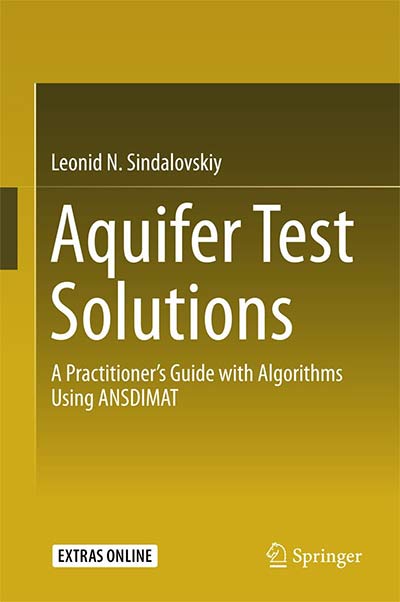
This book is designed as a handbook that presents systematically analytical solutions describing groundwater flow during aquifer tests. The book covers the majority of known solutions from well hydraulics and subsurface flow theory, from pioneering work from the early 20th century to the most recent publications in scientific journals. The book includes about 300 transient solutions covering a wide range of aquifer test scenarios and hydrogeological conditions. All the solutions have been thoroughly tested and implemented in the multifunctional ANSDIMAT software. The book comprises three parts and is supplemented by appendices.
The first part of the book is dedicated to basic analytical relationships referring to pumping tests with constant discharge rate. Conceptual models include confined, unconfined, confined–unconfined, heterogeneous, fracture-porous aquifers, as well as leaky aquifers and multi-layer aquifer systems. Complicating factors such as flow boundaries, aquifer anisotropy, non-uniform aquifer thickness, partial well penetration, wellbore storage and skin, the effect of capillary forces are also accounted for.
The second part of the book focuses on complex pumping test settings and well system configurations. Analytical solutions are presented for pumping from a horizontal or inclined wells, constant-head tests, multi-well variable-discharge tests, simultaneous pumping from adjacent aquifers and dipole flow tests. Detailed descriptions are given for slug and recovery tests.
The third part of the book contains algorithms for evaluating hydraulic characteristics using analytical and graphical methods, that are incorporated in ANSDIMAT.
Read more
